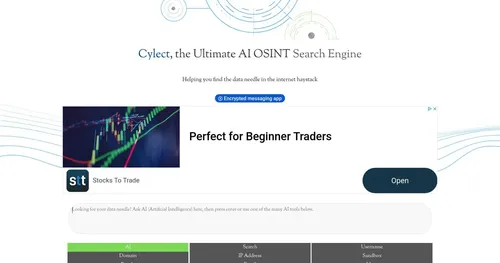Autotab
Autotab is an AI agent that automates tasks by learning human-like workflows, operating in a secure local browser to handle data collection, form filling, and contextual actions. It’s designed for businesses, particularly Fortune 500 companies and fast-scaling startups, to streamline repetitive processes. Backed by OpenAI and Y Combinator, it integrates with existing systems like ERPs or CRMs, navigating complex interfaces with ease. Users provide a video or document to teach workflows, and Autotab executes tasks with high accuracy.
Key features include data collection, form filling, and action-taking. For example, it can scrape leads from databases, input data into government forms, or send messages on platforms like Slack. Its ability to understand context sets it apart from traditional automation tools. It runs locally, ensuring data security, which is critical for enterprises handling sensitive information. The tool’s versatility makes it suitable for tasks like system migrations or vendor management.
Compared to competitors like UiPath and Automation Anywhere, Autotab requires less technical expertise. UiPath offers robust scalability for large enterprises but demands more setup. Automation Anywhere excels in complex automation but can overwhelm non-technical users. Autotab’s strength lies in its intuitive learning from video demos, though it may not match the scalability of UiPath for massive deployments.
Drawbacks include the need for clear instructions to avoid errors. Vague or incomplete demos can lead to missteps, requiring users to invest time upfront. Additionally, tasks requiring creative or subjective decisions are beyond its capabilities. Pricing is competitive for startups and mid-sized firms, though not the cheapest compared to simpler tools like Zapier.
User feedback from sources like X highlights Autotab’s quick learning and reliability for repetitive tasks. For best results, provide a detailed video demo and start with straightforward tasks. Test small projects before scaling to ensure accuracy and efficiency.
Video Overview ▶️
What are the key features? ⭐
- Data Collection: Scrapes leads or data from complex databases efficiently.
- Form Filling: Enters data into CRMs, ERPs, or government forms accurately.
- Action Taking: Sends messages or triggers actions like refunds with context.
- Secure Browser: Operates locally to ensure data privacy and security.
- Workflow Learning: Learns tasks from video demos or documents quickly.
Who is it for? 🤔
Examples of what you can use it for 💭
- Startup Founder: Automates lead scraping to focus on pitching investors.
- HR Manager: Fills out employee onboarding forms across internal systems.
- Operations Lead: Migrates data between legacy and new ERP systems.
- Customer Support: Sends automated responses on platforms like Slack.
- Finance Team: Inputs vendor data into payment systems accurately.
Pros & Cons ⚖️
- Learns workflows quickly
- Secure local execution
- Handles complex systems
- Intuitive for non-tech users
- Needs clear instructions
- Not for creative tasks
FAQs 💬
Related tools ↙️
-
 Alicent for ChatGPT
Fancy Chrome extension that brings the power of ChatGPT directly to your browser
Alicent for ChatGPT
Fancy Chrome extension that brings the power of ChatGPT directly to your browser
-
 SimplyWise
An AI app that streamlines expense tracking and document organization
SimplyWise
An AI app that streamlines expense tracking and document organization
-
 Canary Mail
An AI-powered email client designed to streamline your inbox management
Canary Mail
An AI-powered email client designed to streamline your inbox management
-
 Howie
Schedules meetings via email, streamlining calendar management with AI precision
Howie
Schedules meetings via email, streamlining calendar management with AI precision
-
 Cylect.io
An advanced OSINT tool that facilitates the analysis of vast amounts of data from public sources
Cylect.io
An advanced OSINT tool that facilitates the analysis of vast amounts of data from public sources
-
Jobed Generates AI-powered job descriptions to attract top talent

